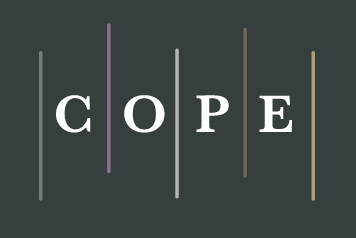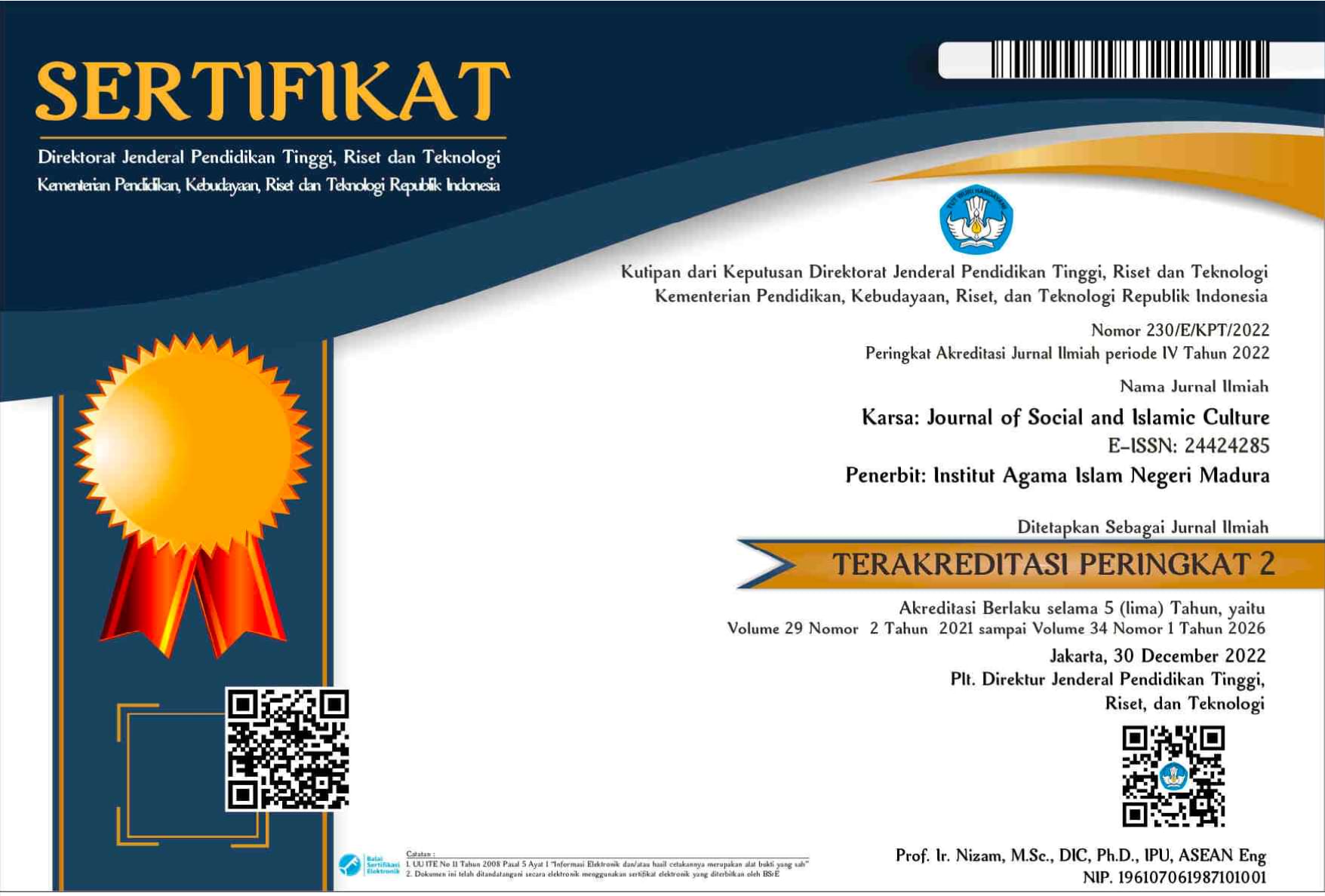Social, Cultural, and Environmental Impact to The Existence of Religious Tourist Site Dian Al-Mahri Depok Jawa Barat
 Abstract views: 272
,
Abstract views: 272
,
 PDF downloads: 225
PDF downloads: 225
Abstract
Copyright (c) 2017 by KARSA. All right reserved
Downloads
References
“Lokasi Tempat Hiburan.” Portal Berita Resmi Pemerintah Kota Depok. Diakses 12 Desember 2016. http://www.depok.go.id/data-hiburan.
“Masjid Dian Al-Mahri.” Id.wikipedia.org. Accessed on 22 February 2017. https://id.wikipedia.org/wiki/Masjid_Dian_Al-Mahri
Afriwanda dan Zulkifli. Analisis angka pengganda pada pariwisata kota banda aceh dan kabupaten aceh besar terhadap pendapatan masyarakat: studi kasus pantai ulee lheue dan lampuuk. Jurnal Ilmiah Mahasiswa (JIM) Ekonomi Pembangunan Fakultas Ekonomi dan Bisnis Unsyiah Vol 2 no 1 (2017): 19-30
Amzath, Ahmed and Zhao, L. “A study of the relationship between carbon emission and tourism development in Maldives.” African Journal of Business Management 8 no 20 (2014): 962-971. http://www.academicjournals.org/journal/AJBM/article-full-text-pdf/2BD64F148221
Badan Pusat Statistik Kota Depok. Depok Dalam Angka 2015. Depok: BPS, 2016.
Badan Pusat Statistik Kota Depok. Statistik Daerah Kecamatan Limo 2016. Depok: BPS, 2016.
Chotib, Moch. “Wisata Religi di Kabupaten Jember.” Jurnal Fenomena 14 no. 2 (2015): 206-225. http://ejournal.iainpurwokerto.ac.id/index.php/ibda/article/viewFile/673/621
Enemuo, Ogechi B and Oduntan Oyinkansola C, “Social impact of tourism development on host communities of Osun Oshogbo sacred grove.” IOSR Journal of humanities and social science (JHSS) Volume 2, issue 6 (sep-oct 2012): 30-35
Gunawan, Anita S., Djamhur H dan Maria Goretti Wi E.N.P, “Analisis Pengembangan Pariwisata Terhadap Sosial Ekonomi Masyarakat: Studi Pada Wisata Religi Gereja Puhsarang Kediri” Jurnal Administrasi Bisnis (JAB) Vol 32 No 1 (2016) : 1-8 http://id.portalgaruda.org/index.php?ref=browse&mod=viewarticle&article=405148
Halumiah, Sitti, Arya Hadi D dan Eka Intan K.P. “Persepsi masyarakat local terhadap dampak industri pariwisata taman safari Indonesia ditinjau dari konsep pembangunan berkelanjutan.” Jurnal Pengelolaan Sumberdaya Alam dan Lingkungan 4 no 2 (2014): 126-135. http://id.portalgaruda.org/index.php?ref=browse&mod=viewarticle&article=367046
Liang, Mingzhu, Mingsen wang and Songjun Xu, The study of temple tourism brand marketing-taking guangxiao temple as an example. Chinese studies (2016) 88-92. Publish online August 2016 in SciRes. http://www.scirp.org/journal/chnstd
Mason, Peter. Tourism impacts, Planning and Management”. Oxford: Butterworth-Heineman, 2003. http://www.mu.edu.et/iphc/images/liblary/Heritage/Heritage_Culture_and_Tourism/Tourism_Impacts_Planing__devet.pdf
Mujib, M. Misbahul. “Tradisi ziarah dalam masyarakat jawa.” Jurnal IBDA: Jurnal Kebudayaan Islam 14 no. 2 (2016): 205-225. http://ejournal.iainpurwokerto.ac.id/index.php/ibda/article/viewFile/673/621.
Pitana, I Gde and I Ketut Surya D. Pengantar Ilmu Pariwisata. Yogyakarta: C.V Andi Offset, 2009.
Ridwan, Mohamad. Perencanaan Pengembangan Pariwisata. Medan: PT Softmedia, 2012.
Rukmana, Nana. Masjid dan dakwah. Jakarta: Al Mawardi Prima, 2002
Supardi dan Teuku Amiruddin. Manajemen Masjid Dalam Pembangunan Masyarakat. Yogyakarta: UII Press, 2001.
Syihab, M. Quraish. Membumikan Al-Quran : Fungsi dan Peran Wahyu Dalam Kehidupan Masyarakat. Bandung: Mizan, 2007.
Tsundoda, Tomoko and Samuel Mendlinger, Economic and Social Impact of Tourism on a Small Town: Peterborough New Hampshire. J Service Science & Management, (2009):61-70. Published Online June 2009 in SciRes (www.SciRP.org/journal/jssm)
Wardhana, Ketut and Amir Fadhilah, “Pariwisata dan ekstensi pendidikan agama,” SOSIO DIDAKTIKA: Social Science Education Journal vol I no 2, (Des 2014) 181-190
Yani, Ahmad and Ahmad Satori Ismail. Menuju Masjid Ideal. Jakarta: LP2SI Haramain, 2001
The journal operates an Open Access policy under a Creative Commons Non-Commercial Share-Alike license. Authors who publish with this journal agree to the following terms:
- Authors retain copyright and grant the journal right of first publication with the work simultaneously licensed under a Creative Commons Attribution License that allows others to share the work with an acknowledgement of the work's authorship and initial publication in this journal.
- Authors are able to enter into separate, additional contractual arrangements for the non-exclusive distribution of the journal's published version of the work (e.g., post it to an institutional repository or publish it in a book), with an acknowledgement of its initial publication in this journal.
- Authors are permitted and encouraged to post their work online (e.g., in institutional repositories or on their website) prior to and during the submission process, as it can lead to productive exchanges, as well as earlier and greater citation of published work.





















